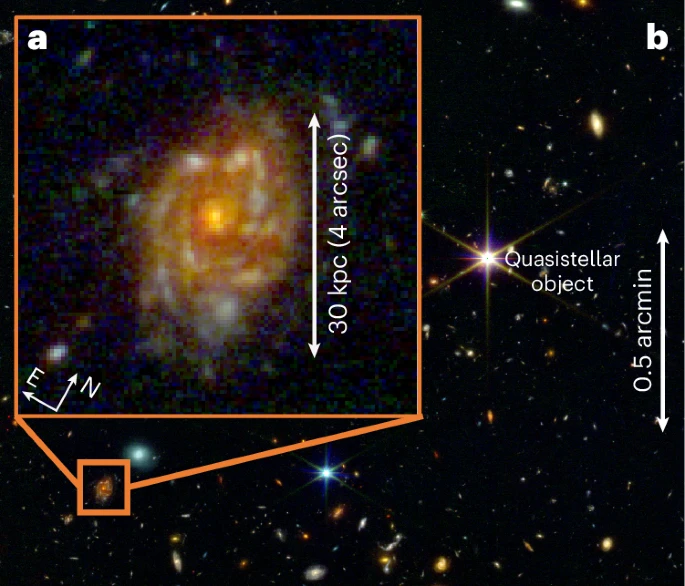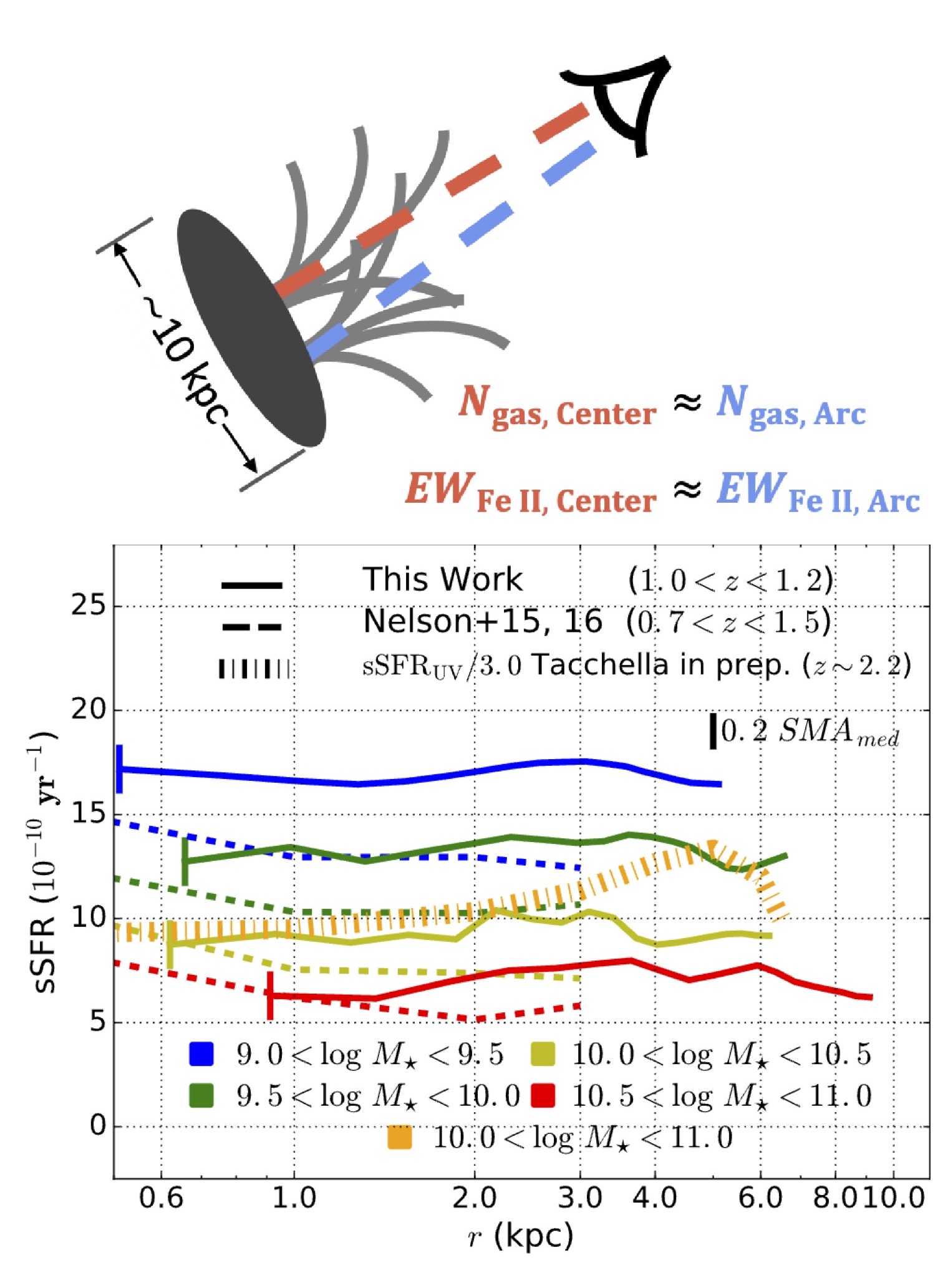Research: Galaxies & Their Surroundings
1. Studying early-epoch galaxies in extreme conditions
Galaxies form and evolve in large-scale cosmic environments, which involve dark matter and flows of gas. Studying high-redshift galaxies in extreme environments can offer us a golden opportunity to (a) understand the roles of the environment in early-epoch galaxy formation and (b) conduct a “stress test’’ to the galaxy models. My studies for this purpose are focused on a field named MQN01, a gas-rich and highly overdense cosmic web node at z~3.2.
Early & fast disk formation in the cosmic web node

We recently discovered a surprisingly large disk in the cosmic web node at z=3.2 using JWST. It has an effective radius of around 10 kpc, as large as the Milky Way nowadays (!). This discovery indicates that the cosmic web node hosts favorable physical conditions for disks to form early and fast at high-z. Such conditions may include dissipative mergers and coherent gas accretion. (Wang et al. 2025; w/ image credit).
Galaxy quenching in a giant reservoir of cool gas
Recent studies revealed a surprisingly large number of quiescent galaxies at z>3. How can galaxies stop forming stars so early? Our discovery of a special system adds one clue to this puzzle. The Red Potato galaxy, from the same cosmic node, is found at the center of a 100-kpc reservoir of cool gas traced by LyA (yellow contours). Intriguingly, it is quiescent although close to this source of gas supply. Our JWST+MUSE observations suggest that the quenching is most likely casued by the halt of gas accretion due to the strong CGM turbulence. (W. Wang et al. in prep).

2. Developing tools for efficient, sensitive spectroscopy
Slitlet-Stepping: I am involved in a study to develop a novel observing mode for spatially-resolved spectroscopy. The mode, ‘‘Slitlet-Stepping’’, enables spatially resolved spectroscopic observations of at least 30 galaxies on JWST simultaneously, by using the Mirco-Shutter Assembly on the NIRSpec. The mode is at least 10 times as efficient as the NIRSpec IFU mode which only targets one galaxy at a time. I co-led an effort to implement this mode to the observations of our JWST program, a large GO program in Cycle 1 for galaxy science.
The high efficiency will open up great opportunities for large galaxy surveys with JWST, and can also be applied to the ground-based multi-slit spectrographs.

Protocols to detect the faint CGM gas: Studies of the Circum-Galactic Medium requires clean, sensitive detections of the faint extended gas emission, which is so far challenging. I developed a set of protocols to filter and enhance this extended line emission signal from the slit spectra, by mitigating the impacts of fast-changing backgrounds and contaminations of detector/cosmic ray noises. The protocols have been applied to JWST program GO1835.
3. Relations between winds and star formation at z≳1
Galactic winds, the outflowing gas ejected from galaxies, are considered to have a prominent impact on galaxy formation. However, much has yet to be known regarding the origins and properties of these winds, especially beyond the local Universe. My thesis research was motivated by one question: How and where do the winds occur within the distant galaxies?
Spatially extended star formation drives galactic winds at z≳1

As part of my thesis work, I was involved in a Keck DEIMOS program, HALO7D (PI: R. Guhathakurta, UC Santa Cruz), which included around 200 $z \sim 1$ star-forming galaxies. I led a case study of the cool galactic winds from a massive star-forming galaxy and found that the winds are most likely launched from all parts of the galaxy. In other words, spatially extended galaxy star formation drives the winds at z~1 (Wang et al. 2022).
This finding agrees with a separate study, in which we found that spatially extended star formation is common among massive star-forming galaxies at $z \sim 1$ (Wang et al. 2017).